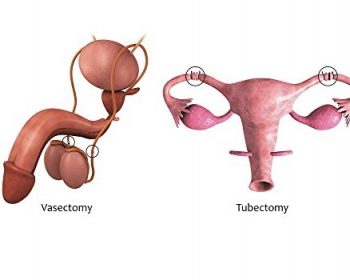
DYSMENORRHEA
The menstrual period or menstruation is a part of the menstrual cycle that takes 28 days, on average, to complete. It starts at puberty at around 12-16 years of age and lasts until menopause at around 45-55. The first day of menstruation is counted as day one of the menstrual cycles. Average menstruation lasts from 3-5 days.
All of these vary for different individuals and a normal menstrual period looks different for different individuals.
Unusually painful and persistent periods or menstruation are called dysmenorrhea. It is characterized by severe and frequent menstrual cramps. Most women experience slight to moderate pain during their menstruation. This is different from dysmenorrhea, which hampers the individual’s lifestyle and requires them to take time off from work.
Types
Dysmenorrhea can be:
- Primary
- Secondary
Primary dysmenorrhea is caused due to uterine contractions caused by prostaglandins, hormone-like substances produced locally by the cells lining the uterus and circulated in the blood.
On the other hand, the menstrual pain in secondary dysmenorrhea is due to other medical reasons, like mainly endometriosis. Other causes that can lead to secondary dysmenorrhea are –
- Pelvic Inflammatory Disease (PID)
- Infection or tumors in the pelvis
- Uterine fibroids
Symptoms
Individuals who suffer from dysmenorrhea also experience other symptoms apart from pain –
- Pain and menstrual cramps in the lower abdominal area
- Lower back pain
- Pain radiating to legs
- Nausea, Vomiting
- Faint spells
- Diarrhea
- Fatigue, weakness
- Headaches
Risks
Even though any individual can suffer dysmenorrhea, the below-listed individuals have an increased risk –
- Those who smoke
- Those who consume an excessive amount of alcohol
- Those who suffer from obesity
- Those who have an early Menarche
Diagnosis & Treatment
Any individual experiencing more than normal or tolerable level of pain during their menstruation should consult with their healthcare provider. The diagnosis for dysmenorrhea generally does not involve any diagnostic tests. Still, most doctors would advise some basic tests to rule out secondary dysmenorrhea or any other underlying causes and to have some baseline data for future comparison.
Basic diagnostic tests include-
- Blood tests like Complete Blood Count
- Hormone study for Oestrogen and Progesterone
- Ultrasonography for detection of uterine fibroids, Endometriosis
Treatment for dysmenorrhea includes various measures from non-invasive approaches to radical surgery.
- Most individuals use heat application to the lower abdomen to relieve menstrual cramps.
- Another approach is oral pain medication or skin patches. Medications like Non-Steroidal Anti-Inflammatory Drugs (NSAIDs) like Ibuprofen, Naproxen, Mefenamic acid are prescribed by healthcare providers to help relieve menstrual cramps. These work best when started before the onset of pain. Aspirin is usually avoided for menstrual cramps as it can lead to an increase in menstrual bleeding.
- Oral contraceptive pills are also advised for pain management in some cases. If active pills are taken for 90-120 days continuously, periods will only occur 3-4 times a year.
- It is advised to include some mild exercise like walking and stretching to help with cramps.
- Diet including more calcium and minerals, fruits, vegetables, and avoiding caffeine, excess salt, and sugar is advised.
- In case of severe symptoms, a hysterectomy (surgical removal of the uterus) may be suggested.
For enquiries and online appointments, visit www.DivakarsHospital.com
You can seek 2nd opinion with Dr Hema Divakar and other specialist doctors through the Divakar’s Hospital app which can be downloaded from Google Play Store or ios here – https://bit.ly/2C5cW1e
Subscribe to Divakars Hospital YouTube Channel and stay updated on videos related to pregnancy and women’s healthcare. Subscribe here – https://bit.ly/3Avct4w







